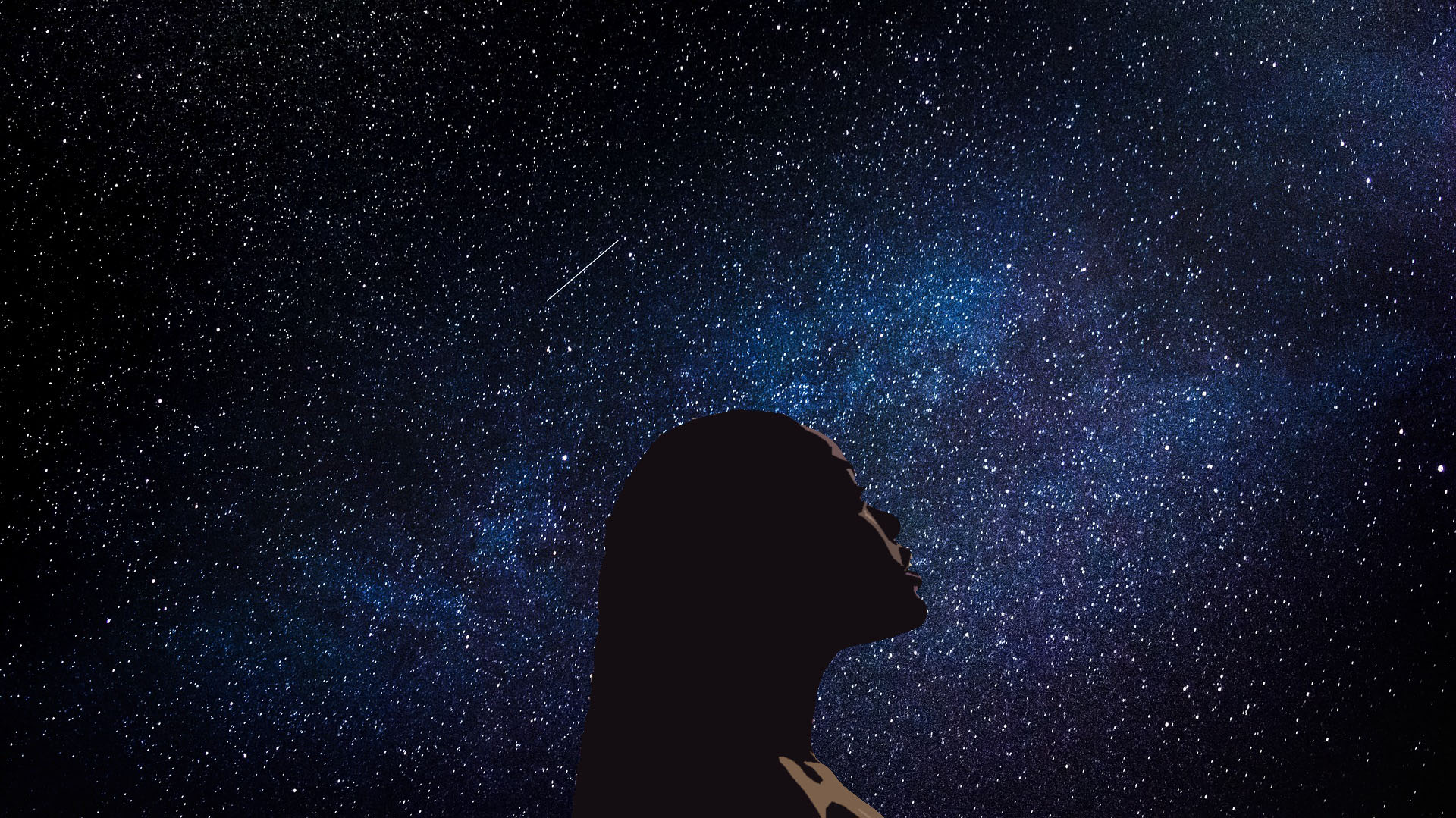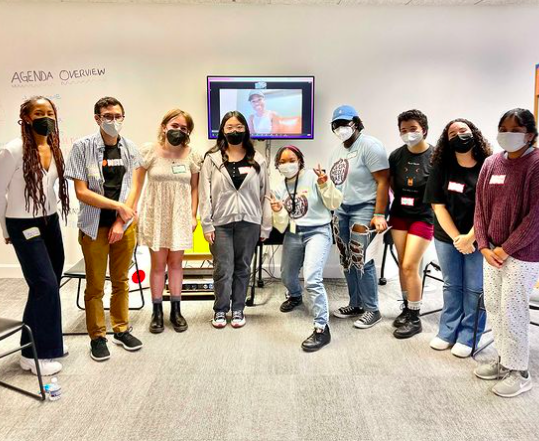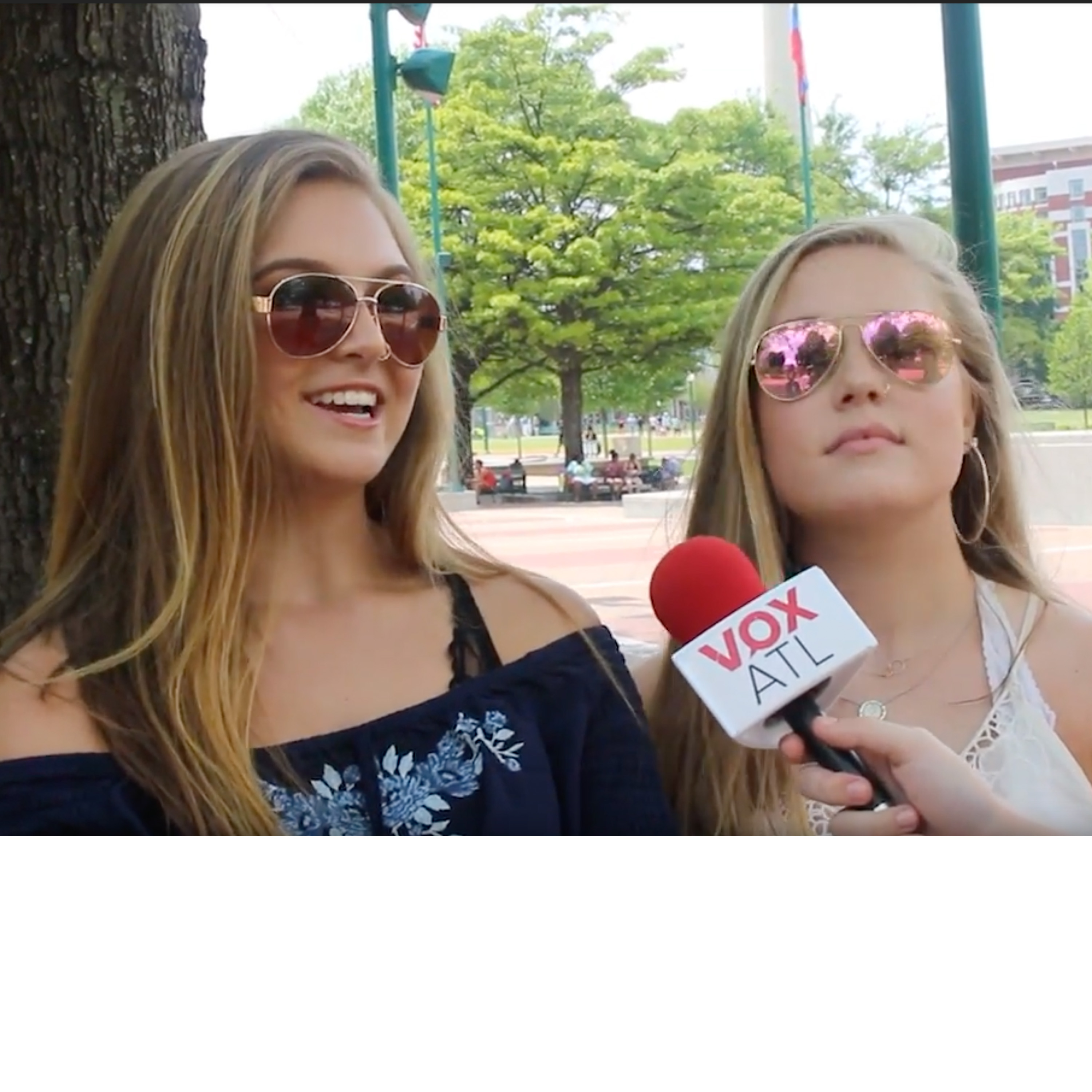I decided to stop perming my hair in eighth grade. After that, I chopped it all off.
Being so young and overly concerned with the opinion of my peers, I don’t know what might have possessed me to endeavor such a great change — a change that made me vulnerable in the eyes of my peers. Hair is an important part of my sense of self and community, especially as a Black woman.
It often was, and is, the first thing that people notice about me. Sometimes it’s praise, “Who did your hair?” Or passive-aggressive confusion, “When are you going to do something with your hair?” It is also a touchpoint between Black people — the gripes and joys of dealing with our tresses. Whether it is afros, braids, perms, weaves, waves, or locs, Black people have created a distinct culture dedicated to the maintenance and expression of our hair.
In their book, “HairStory,” Ayanna Byrd and Lori Tharps emphasize the cultural significance of hair in both African and African-American culture, “The word ‘culture’ often gets misused and overused but with Black hair there is a real culture, in the way that anthropologists define it: the learned patterns of behavior and thought that assist a group in adapting to its environment and include ritual, language, memory, and evolution.”
Ritual was certainly a big part of relaxed hair for me. My monthly appointment consisted of sitting in my grandmother’s kitchen as she coated my hair with the thick, itchy, burning chemicals. Chemicals designed to break down my kinky curls in imperceptible ways. Making them more “manageable.” It wasn’t an appointment I had set by myself. It had been decided for me as soon as my hair had crept past my ears.
My natural hair was continually expressed to me as a chore. Too much, too thick, too nappy. Spending time, restless, as icky goop destroyed my hair was not a priority for my 13-year-old self. Undoubtedly with images of Assata Shakur and Angela Davis in mind, I proudly exclaimed to my grandmother (who had styled my hair for as long as I had hair enough to style) that I wanted to get the “big chop.”
Instead of her usual kit of “kiddie perm,” this Sunday, my grandmother was armed with clippers. I braced myself as the foreign object grazed my head. Peripherally, I watched as my life’s growth fell past my shoulders down onto the floor. It was sentimental in a way. I wanted to keep it as a souvenir. I think I actually saved my bangs, zipped them away in a bag and kept them for an embarrassing amount of time.
History of the Big Chop
I was far from the first person to participate in this rite of passage. The “big chop” (the tradition of cutting your relaxed, permed hair to start over naturally), grew in popularity during the 2000s. There are several ideas about what precipitated this trend toward natural hair in this particular period. Byrd and Tharps put the nu-age natural movement in the context of growing environmental consciousness. Awareness of harmful chemicals, environmental degradation, and the organic movement encouraged Black women to think critically about the chemicals they used in their hair. After a decade of blowouts and presses, this was quite a change.
It would be remiss, however, not to draw back to the movement throughout the ’60s and ’70s, the age of afros. In the crucible of the Civil Rights Movement, Black people, bucking against the white standard, deserted their perms and grew out their natural hair. The afro then, however, was seen as less of a style and more of a political statement. With activists, The Jackson 5, and contestants on “Soul Train” rocking glorious, upright halos of hair, the afro became emblematic of the ongoing struggle for freedom.
As activist Marcus Garvey once said, “Do not remove the kinks from your hair, remove them from your brain.”
Hair was also the root of the revolutionary “Black is Beautiful” movement that catalyzed a rejection of Eurocentric beauty standards in regard to the appearance of black people. It criticized the notions that features typical to Black people — darker skin, kinkier hair, and ethnic facial features — were inherently ugly. This movement helped spring a change in attitudes towards Black hair as everyday Black people ditched their perms for a more natural look. Radical acceptance of Black identity and appearance was becoming more mainstream.
Despite this incredibly empowering history tied to natural hair, there is still this terrible anxiety over transitioning from relaxed hair. I wasn’t alone in this feeling, however. Nubia Udoh, a sophomore at Smith College, experienced the same inertia in her transitioning process from locs to an afro.
“The state of my hair was like 80% of my confidence, but I knew I had to get rid of the locs because my scalp couldn’t sustain them. I was scared of what I would look like with short hair, especially because I already struggled with getting misgendered and I thought that having a short afro would only contribute to that problem,” she said.
After I cut off all of my relaxed hair, I was left with a small tuft of fro — cropped on the sides and long in the front. Feeling the extra breeze on my scalp and my newly bared ears, I went to school the next morning. The various reactions were swift. Some of my peers (mainly my small circle of middle school friends) applauded me for my bravery. Others expressed displeasure on my behalf, telling me what I was trying to do. That I was trying to be a boy, that I was gay. The taboo of being labeled those two things at an all-girls school intensified the discomfort of my new appearance. At the end of the day, it was just hair. How could my hair tell the world so much about myself before I could even open my mouth?
The Policing of Presence
This discussion may seem absurd to anyone who isn’t Black or isn’t familiar with Black hair. I mean, what could be so controversial about letting your hair grow naturally? Unfiltered, untranslated?
Not so surprisingly, hair is a highly policed part of Black identity and presence. From the beginning of the African-American experience, Black people’s hair has been tangled in the various perceptions of beauty and critiques of Eurocentrism. Aware of the significance that hair had to Africans — symbols of status, community, and individuality — one of the first things that slave captors did was shave their heads.
Since then, Black hair has been the constant object of ridicule. Minstrel shows fashioned their characters with wigs emulating kinky hair as a means to ridicule Black features along with other ethnically typical features. Discrimination against the Black hair textures extends beyond the racist entertainment of bygone eras, however.
Today, Black professionals have been fired for wearing their natural hair and Black hairstyles have been called distracting by schools. Attitudes about the “unprofessionalism” of Black hair go to show that the negativity toward Black presences lingers. To progress in their careers, academia, or simply be respected as members of society, Black people are met with the implicit expectation that they must tame their hair.
Zariah Taylor, a 17-year-old student at Carver Early College High School, echoes the same sentiment.
“One thing I’ve always noticed is that any time I flat ironed my hair I would always receive more compliments then I would when my hair was natural. I would put a lot of effort into styling my natural hair really well but no one really noticed my hair unless it was straight,” Taylor said.
These instances have sparked deserved outrage and backlash. In recent years, there have been several movements to prevent the discrimination of Black hair, in the workplace, in the military, and in schools. One outcome of this activism has been the CROWN Act. The CROWN Act stands for ¨Creating a Respectful and Open World for Natural Hair.” Led by the company Dove and the CROWN coalition, the act seeks to “ensure protection against discrimination based on race-based hairstyles by extending statutory protection to hair texture and protective styles such as braids, locs, twists, and knots in the workplace and public schools.”
In the same vein, The New York City Commission on Human Rights has lobbied for the “decriminalization” of natural hair as the issue has been termed. The Commission connects the not-so-implicit line between race-based discrimination and hair discrimination. In this movement, it became the first municipality to officially ban the discrimination against natural hair.
“Policies that limit the ability to wear natural hair or hairstyles associated with Black people aren’t about ‘‘neatness’ or ‘professionalism.’ They are about limiting the way Black people move through workplaces, public spaces and other settings,” said NYC Human Rights Commissioner and Chair Carmelyn P. Malalis in the report.
What is so threatening about the authentic appearance and presence of Black people that would make someone force a high school wrestler to cut off their locs before a match? Why are we expected to change and sacrifice a part of our identity, without accommodation?
Jennie Matos, a 15-year-old student at The Lovett School reflects on her experiences going to a predominately white institution (PWI) with her “mix between wavy and curly” hair.
“I’ve always gotten different treatment for my hair especially when I’ve gotten it straightened. I started to get it straightened a lot in middle school because it would seem like everyone would like it more than when I wore my hair natural or in braids, especially since I go to a PWI,” said Matos, “When I wore braids to school, my white counterparts used to either make fun of it or were just weirdly mesmerized by it which kind of creeped me out.”
Similar to Matos, my feelings about my own natural hair grew more complicated as I entered a PWI for high school. It felt useless to me, spending so much time thinking about something that peers rarely thought about. So most of the time, my short curls stayed unmoisturized and irrevocably knotted against my own head. My own family members would endlessly harangue me for my neglect of my hair. I recall secretly bursting out in tears, after some family gatherings.
Was that all that mattered to them? Why couldn’t they leave me alone? After all, it was my own hair!
Attitudes about presentability and professionalism are not only enforced upon Black people institutionally but also perpetuated in Black communities where the concepts of “good” hair and “bad” hair continue — aligned still with the stringent European beauty standard.
Conflict Within
Despite the proliferation of natural hair and activism, discrimination within the Black community persists against particular textures of Black hair. Texturism, or the idea that some textures of hair are better than others, runs rampant in supposedly safe communities for natural hair.
Hair types range from 1a (hair completely straight from root to end) to 4c (heavily coiled). Usually, texturism is favored towards the lower end of the spectrum — wavy hair or looser curl patterns — while discriminating against kinkier hair. To some, texturism is seen as an extension of colorism. And it does function in a similar capacity. To uphold the European beauty standard with the implicit notion that proximity to whiteness is better.
“I often get told I have ‘good hair’ or people wish they had my hair and I find this as a very backhanded comment or ‘compliment’ because there is no such thing as ‘good hair,'” said Ramaya Thomas, Atlanta International School student.
In my personal experience, texturism had a deeper impact than typical hair discrimination. Being Black, the knowledge that my features are perceived negatively by some people is internalized. But the layered standards and conflicting ideals can be tortuous. If only some natural hair is “good hair,” then where did mine fall on the scale? If I didn’t have “good hair,” could I have natural hair? Should I give up and start perming my hair again?
“There is a difference between natural and nappy,” some posts online told me. “Your mom permed your hair for a reason,” others said.
This was especially discouraging for me. I was the only person in my immediate family with unpermed hair. So all I had for guidance was the internet, where representation for my hair type was sparse. There were plenty of women with type 2 hair, but not many with my confused, multi-textured mass of type 4 hair.
“For the most part I don’t feel affected by it since I surround myself with people who also have thick hair and are proud of it, but I’ve definitely noticed on social media that there is a certain type of hair that seems to get praised the most (people with looser curls) whereas there is less representation for people with thicker hair in the natural hair community,” said Taylor.
All this simply boils down to another form of policing. Another means of reinforcing the same hegemonic beauty standards that oppress all Black women, regardless of their skin color or hair type. As Tamara Morgan, 17, said, “Whether or not you have straight hair or natural hair, society will always treat one or the other differently because of the social standard created by white people.”
In the attempt of getting “good hair,” I lost my original resolve in having 100 percent natural hair. My family convinced me to get a Jheri curl — a soft perm technique that makes my hair more “manageable.” Unlike the typical perm, the Jheri treatment, created by American chemist and hair dresser Jheri Redding, breaks down the hair in a less intense way, straightening the hair only slightly to extend the curl.
It is often used as an option for those transitioning from relaxed hair. Unfortunately however, this was sort of a trap for me since this (still irreversible) process was damaging my hair. It meant I still wasn’t natural. My 4c hair unaltered just wasn’t good enough.
Naps, Knots, and All
It has been six years since the eighth grade. I am now 19, and my hair has grown to the length it was before. I am still learning how to take care of it and sometimes it is more challenging than I would like it to be. Still, I am proud of the (almost) natural hair that I have.
It saddens me, however, to think of the Black girls who have gone on the constant struggle of dealing with their hair. Not only struggling through styles but also the constant criticism and policing of their presences. And all the Black girls who will go through these conflicts in the future.
Things have gotten better. But not good enough. The concepts of good and bad hair infect discussions of natural hair in the Black community. Further from that, discussions on whether bonnets are acceptable just goes to prove that Black women face continuing battles against those who seek to attack their autonomy of their own bodies and presence.
“Frankly, we need to do better and even within the Black community we need to hold people who continue to uphold these ideals accountable because this is toxic. Your hair should be able to be embraced no matter its texture or how you wear it or whatever else. A lot of people are tired of being mistreated for something they were literally born with,” said Matos.
This statement is more than true. To be natural shouldn’t be seen as an act of defiance or a game of politics. Black women should be allowed to wear their hair in whatever way they like. Naps, knots, and all.




